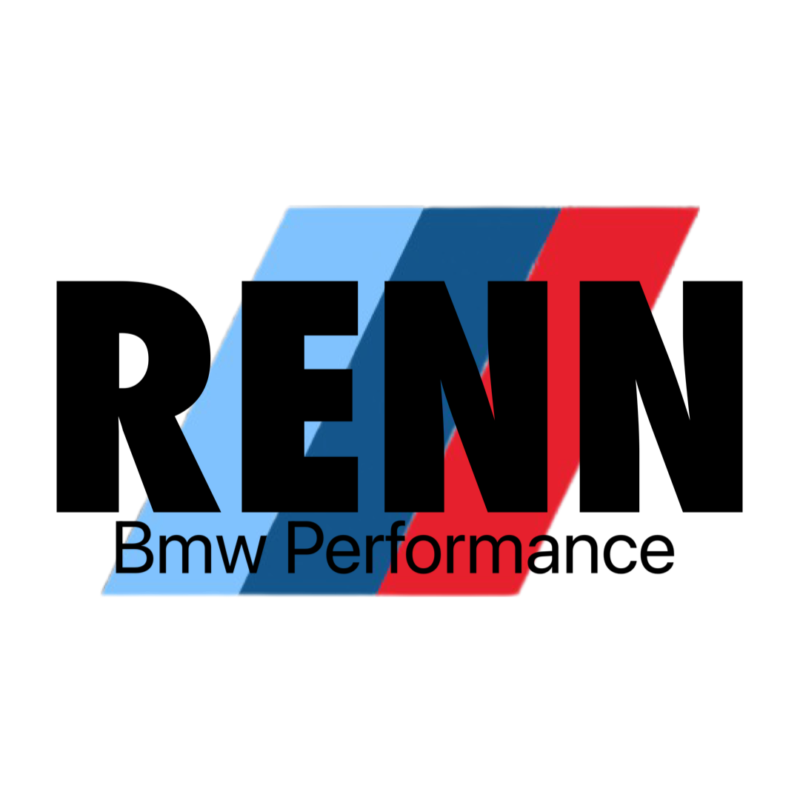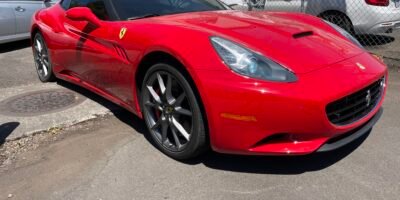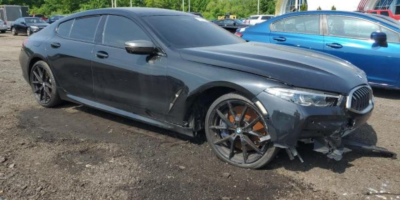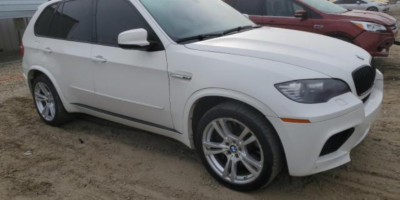Automotive
Top 15 BMW Cars, SUVs, and Motorcycles from 1992 to 2012: Cost of Ownership, Resale Values, and Common Problems
Introduction
Bayerische Motoren Werke AG, commonly known as BMW, has long been synonymous with high-performance vehicles, blending luxury with precision engineering. Over the decades, the brand has built an impressive portfolio of cars, SUVs, and motorcycles that have captivated enthusiasts and everyday drivers alike. From the sporty agility of their coupes to the robust power of their SUVs, and the unparalleled thrill of their motorcycles, BMW has consistently delivered vehicles that stand out in terms of performance, aesthetics, and innovation.
This blog post delves into the top 15 BMW models from the years 1992 to 2012, a pivotal period in the brand’s illustrious history. We will explore a diverse selection of cars, SUVs, and motorcycles, examining each model’s cost of ownership, resale values, and common issues. This 20-year span was marked by significant technological advancements and design breakthroughs that have helped shape the modern automotive landscape.
Whether you’re a seasoned BMW aficionado or a prospective buyer searching for Portland BMW cars for sale, this comprehensive guide aims to provide valuable insights. It will also be particularly useful for those eyeing the market for a San Diego BMW for sale, offering a closer look at the enduring qualities and potential pitfalls of these storied vehicles. By highlighting both the strengths and weaknesses of these models, we aspire to assist you in making informed decisions, whether you’re considering a BMW car, SUV, or motorcycle.
Join us as we navigate through this remarkable era in BMW’s history, shedding light on the vehicles that have left an indelible mark on the automotive world. Each model featured in this list has contributed uniquely to the BMW legacy, and understanding their nuances can greatly enhance your appreciation and ownership experience.
BMW 3 Series (E36)
The BMW 3 Series (E36), produced from 1992 to 1999, stands as an iconic model in the automotive world. Renowned for its balanced performance and dynamic handling, the E36 quickly gained popularity among car enthusiasts. Its agile chassis, coupled with a range of powerful engine options, provided a driving experience that was both engaging and refined. This series included various body styles, such as sedans, coupes, and convertibles, catering to a broad spectrum of buyers.
When considering the cost of ownership for the BMW 3 Series E36, it’s crucial to account for maintenance and repair expenses. While the E36 is celebrated for its engineering, it is not devoid of issues that can impact long-term ownership costs. Routine maintenance, such as oil changes, brake replacements, and suspension work, is relatively straightforward and aligned with industry standards. However, the E36 is known to encounter specific problems, which can escalate expenses.
One of the most common problems with the E36 is cooling system failures. Components such as the radiator, water pump, and thermostat are prone to wear and can lead to overheating if not addressed promptly. Electrical issues are another notable concern, often manifesting in erratic window regulators, faulty central locking systems, and aging wiring harnesses. These problems can be mitigated with proactive maintenance but can still contribute to the overall cost of ownership.
Regarding resale value, the BMW 3 Series E36 has shown resilience in the used car market. Initially, depreciation was steep, as is the case with most vehicles. However, in recent years, the E36 has seen a resurgence in value, particularly well-maintained examples. Enthusiasts and collectors are increasingly seeking out these models, appreciating their blend of classic BMW design and engaging driving dynamics. This trend has positively influenced resale values, making the E36 a compelling choice for those considering Portland BMW cars for sale or San Diego BMW for sale.
BMW 5 Series (E39)
The BMW 5 Series (E39), produced from 1995 to 2003, represents a pinnacle of luxury and performance in the mid-sized executive car segment. Renowned for its sophisticated design, the E39 combines elegant aesthetics with superior driving dynamics. The interior is characterized by high-quality materials, comfortable seating, and advanced technology for its time, making it a desirable choice among BMW cars and SUVs enthusiasts.
When discussing the cost of ownership for the BMW 5 Series (E39), several factors come into play. Routine maintenance costs are moderate for a luxury vehicle, with oil changes, brake services, and other standard upkeep typically aligning with industry averages. However, as the vehicle ages, certain repairs can become more frequent and costly. For instance, suspension components, particularly control arms and bushings, are prone to wear and may require replacement. Additionally, oil leaks, often stemming from valve cover gaskets and oil filter housing gaskets, are common issues that can add to maintenance expenses.
In terms of resale value, the BMW 5 Series (E39) has managed to retain a respectable market presence. Well-maintained examples with service records, especially those with lower mileage, continue to attract buyers. The E39’s reputation for durability and performance contributes to its sustained demand, making it a viable option for those exploring Portland BMW cars for sale or seeking San Diego BMW for sale listings.
Nonetheless, potential buyers should be aware of recurring problems. The aforementioned suspension issues and oil leaks are among the most prevalent. Electrical gremlins, such as malfunctioning window regulators and pixelated dashboard displays, are also noted concerns. Despite these issues, the overall driving experience and timeless design of the E39 make it a compelling choice for those considering top 15 BMW you should consider.
BMW X5 (E53)
The BMW X5 (E53), introduced in 1999, marked BMW’s first foray into the SUV market, setting new standards for luxury and performance in this segment. As the first generation of BMW’s SUVs, the X5 combined the brand’s hallmark driving dynamics with off-road capabilities, appealing to both traditional BMW enthusiasts and new customers looking for a versatile vehicle. Its robust build and powerful engines made it a standout in its class, offering a unique blend of performance and practicality.
Performance-wise, the BMW X5 (E53) came with a range of inline-six and V8 engines, providing a balance of power and efficiency. The vehicle’s all-wheel-drive system, combined with its advanced suspension setup, ensured excellent handling and ride quality, even on challenging terrains. These characteristics made the X5 a popular choice among those seeking a luxury SUV with sporty driving dynamics.
When it comes to the cost of ownership, the BMW X5 (E53) is a mixed bag. While it delivers impressive performance and luxury, it also comes with higher maintenance costs typical of premium German vehicles. Fuel efficiency varies by engine choice, with the V8 models being notably less economical than the six-cylinder variants. Routine maintenance, including oil changes and brake replacements, can be on the pricier side, and owners often face higher insurance premiums due to the vehicle’s luxury status.
Resale values for the BMW X5 (E53) tend to be relatively strong, thanks to its reputation for quality and performance. However, prospective buyers should be aware of some common issues that can affect these vehicles. Transmission problems are a frequent concern, particularly in models with higher mileage. Electrical faults, including issues with the vehicle’s lighting and infotainment systems, are also commonly reported. These problems can lead to costly repairs if not addressed promptly.
In summary, the BMW X5 (E53) remains a significant model in the SUV market, offering a compelling mix of luxury, performance, and versatility. While it does come with higher ownership costs and potential reliability concerns, its strong resale value and driving experience make it a worthwhile consideration for those seeking a premium SUV. Whether you’re looking at Portland BMW cars for sale or checking out San Diego BMW for sale listings, the X5 (E53) is a model that stands out in the used car market.
BMW M3 (E46)
The BMW M3 (E46), produced from 2000 to 2006, is often heralded as an iconic model in the BMW lineup, especially among car enthusiasts. Its 3.2-liter inline-six engine, producing 333 horsepower, provides a thrilling driving experience, complemented by precise handling and a balanced chassis. This model is celebrated for its performance credentials, including a 0-60 mph time of approximately 4.8 seconds, making it a standout in the realm of sports cars.
However, owning an M3 (E46) involves careful consideration of maintenance and performance upgrades. The cost of ownership can be significant, as regular maintenance is essential to keep the vehicle operating at its peak. Common maintenance tasks include regular oil changes, brake pad replacements, and suspension checks. Performance upgrades, such as exhaust systems, suspension enhancements, and tuning, can further elevate the driving experience but come at an additional cost.
Resale values for the BMW M3 (E46) have shown interesting trends over the years. Initially, as with most cars, depreciation was observed, but in recent years, the model has experienced a resurgence in value, especially for well-maintained, low-mileage examples. Enthusiasts and collectors highly seek out the E46 M3, and its value retention has been more robust compared to other vehicles from the same era.
Common problems associated with the BMW M3 (E46) are crucial for potential buyers to consider. Notably, the rear subframe issues have been a point of concern. Over time, the rear subframe can develop cracks, leading to costly repairs if not addressed promptly. Additionally, the VANOS system, which controls variable valve timing, is prone to failure in this model. Symptoms of VANOS issues include rough idling and a loss of power, necessitating repairs that can be expensive.
For enthusiasts looking to buy a BMW M3 (E46), it’s vital to have a comprehensive understanding of these aspects. From Portland BMW cars for sale to San Diego BMW for sale, finding a well-maintained model can offer an exceptional driving experience, provided that the common issues are addressed and the vehicle is kept in top condition.
BMW 7 Series (E65/E66)
The BMW 7 Series (E65/E66), produced from 2001 to 2008, epitomizes luxury and sophistication. This flagship model from BMW offered an array of advanced technological features and high-end amenities that set it apart in the luxury sedan market. The E65/E66 models introduced the iDrive infotainment system, a groundbreaking innovation at the time, although it was initially met with mixed reviews due to its complexity. Other highlights included adaptive headlights, active cruise control, and a range of powerful engine options, from the inline-six to the V12.
However, the cost of ownership for the BMW 7 Series (E65/E66) is notably high, reflecting its premium status. Routine maintenance, insurance, and the price of parts and labor contribute to this expense. Luxury vehicles often require specialized care, and this model is no exception. Owners should be prepared for higher fuel consumption, premium-grade gasoline, and possibly more frequent servicing compared to non-luxury cars.
Resale values for the E65/E66 7 Series have been somewhat volatile. Initially, depreciation was steep due to the high initial purchase price and the introduction of subsequent models that overshadowed older ones. However, in recent years, well-maintained examples have seen a resurgence in value, particularly those with lower mileage and in pristine condition. This trend reflects a broader appreciation for classic BMW models.
Common problems with the BMW 7 Series (E65/E66) often revolve around its electronic systems. Early iterations of the iDrive system were prone to failure, leading to a range of usability issues. Other electronic malfunctions frequently reported include problems with the power windows, air suspension, and various sensor failures. It’s also worth noting that the complexity of these systems makes repairs particularly challenging and expensive.
Overall, the BMW 7 Series (E65/E66) remains a compelling option for those seeking a blend of luxury, performance, and advanced technology. Potential buyers and current owners should weigh the high cost of ownership and be mindful of the common electronic issues that may arise.
BMW R1150GS
The BMW R1150GS, produced from 1999 to 2004, holds a prominent place in the adventure bike segment. Renowned for its versatility and durability, this motorcycle is designed to excel on a wide range of terrains, from rugged off-road trails to smooth highways. It is powered by a 1,130cc flat-twin engine, delivering a balanced blend of power and stability, which makes it a favorite among adventure enthusiasts.
The cost of ownership for the BMW R1150GS is relatively moderate compared to other motorcycles in its class. Routine maintenance, including oil changes, valve adjustments, and brake servicing, is necessary to keep the bike performing optimally. Parts replacement, such as tires and brake pads, are standard expenditures, but the robust build of the R1150GS means fewer frequent major repairs. However, it is important to factor in the costs of more substantial maintenance tasks, such as clutch replacements, which can be more expensive.
When it comes to resale value, the BMW R1150GS holds up well. Its reputation for reliability and performance ensures it remains a sought-after model in the used bike market. Enthusiasts often seek out this model, appreciating its historical significance and proven track record. As a result, depreciation is relatively slow, making it a wise investment for those looking for a long-term adventure bike.
Despite its strengths, the BMW R1150GS is not without its common issues. Final drive failures are a notable concern, often attributed to inadequate lubrication or bearing wear. Gearbox problems, including difficulty shifting and gear engagement issues, are also reported by some owners. Addressing these issues promptly through regular maintenance and inspections can mitigate the risks and ensure a smoother riding experience.
The BMW R1150GS remains a landmark in the adventure motorcycle category, known for its robust performance and enduring appeal. Whether navigating city streets or exploring remote trails, it continues to inspire confidence among riders worldwide.
BMW Z4 (E85/E86)
The BMW Z4 (E85/E86), produced between 2002 and 2008, stands as a testament to BMW’s commitment to delivering high-performance sports cars with an emphasis on design and driving pleasure. The Z4’s sleek, aggressive styling, characterized by its elongated hood and short rear deck, captures the essence of a classic roadster while incorporating modern design elements. Available in both roadster (E85) and coupe (E86) variants, the BMW Z4 offers versatility without compromising on performance.
Under the hood, the Z4 comes equipped with a range of powerful engines, from the spirited 2.5-liter inline-six to the high-performance 3.2-liter inline-six found in the Z4 M. These engines deliver impressive acceleration, responsive handling, and a dynamic driving experience, making the Z4 a popular choice among driving enthusiasts. The balanced chassis and precise steering further enhance its appeal as a sports car.
When considering the cost of ownership, prospective buyers should account for expenses such as insurance and maintenance. Insurance premiums for the BMW Z4 can be higher than average, given its status as a high-performance sports car. Maintenance costs can also be significant, especially as the vehicle ages, with routine services and potential repairs. However, for those passionate about driving, the Z4’s performance and style often outweigh these costs.
Resale values for the BMW Z4 have demonstrated resilience over the years. While depreciation is inevitable, well-maintained models with lower mileage tend to retain value better, particularly those with desirable features and options. The Z4’s status as a classic sports car ensures continued interest from collectors and enthusiasts, which helps support its resale value.
Common problems associated with the BMW Z4 include issues with the roof mechanism, particularly in the roadster versions. Owners have reported malfunctions in the electronic components controlling the convertible top, which can be costly to repair. Additionally, electronic failures, such as problems with the central locking system and dashboard displays, are not uncommon. Regular maintenance and timely repairs are essential to mitigate these issues and ensure the vehicle’s longevity.
Conclusion
The exploration of the top 15 BMW cars, SUVs, and motorcycles from 1992 to 2012 provides a comprehensive understanding of the legacy and innovation behind these iconic vehicles. Each model, whether it’s a sleek car, a robust SUV, or a cutting-edge motorcycle, embodies the performance, luxury, and technological advancements that BMW is renowned for. The period between 1992 and 2012 witnessed significant milestones for BMW, showcasing models that have become benchmarks in their respective categories.
When considering the purchase of any of these BMW models, it is crucial to weigh several factors. Understanding the cost of ownership is vital, as it encompasses not only the initial purchase price but also maintenance, fuel costs, and insurance. Additionally, resale values play a significant role in the overall ownership experience. BMW vehicles, known for their enduring quality, often retain their value well, but market conditions and model-specific factors can influence resale prices.
Common problems associated with these models are another critical aspect to consider. Awareness of potential issues can help prospective buyers make informed decisions and prepare for any necessary repairs or maintenance. From electronic glitches to mechanical wear and tear, understanding these common problems can mitigate unexpected expenses and enhance the ownership experience.
BMW’s legacy in the automotive and motorcycle industries is marked by a relentless pursuit of excellence. The models from 1992 to 2012 reflect a period of dynamic evolution, where BMW consistently pushed the boundaries of performance and luxury. This era solidified BMW’s reputation as a leader in innovation, setting the stage for future advancements. For enthusiasts and potential buyers, these 15 BMW models represent not just vehicles but a rich heritage of engineering and design prowess that continues to captivate and inspire.






